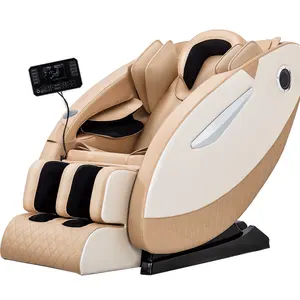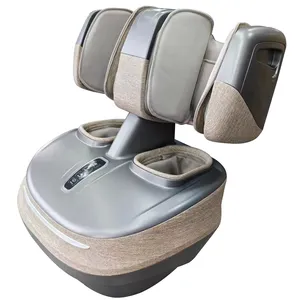ได้รับความนิยมในอุตสาหกรรมของคุณ






ขายส่งโคมไฟตั้งโต๊ะหรูหราทันสมัยแบบพกพาไร้สายแบบชาร์จไฟได้รอบ LED โคมไฟตั้งโต๊ะบาร์พร้อมระบบควบคุมแบบสัมผัสร้านอาหารโรงแรม
฿127.44 - ฿194.33
การสั่งซื้อขั้นต่ำ: 20 ชิ้น
การจัดส่งต่อชิ้น: ฿101.28







ไฟ LED ทำงานแบตเตอรี่ภายใต้ตู้ไฟติดบนแสงเซ็นเซอร์การเคลื่อนไหวไร้สายแม่เหล็ก
฿249.27 - ฿290.38
การสั่งซื้อขั้นต่ำ: 1 ชิ้น







Ce Rohs ใบรับรองห้องครัวแสงห้องน้ำสวิทช์เซ็นเซอร์การเคลื่อนไหวตู้เสื้อผ้ากว่านำแสงตู้
฿168.17 - ฿526.93
การสั่งซื้อขั้นต่ำ: 2 ชุด







Nordic Wirelessร้านอาหารTouchตารางโมเดิร์นหรูหราUSBไร้สายLedโคมไฟตั้งโต๊ะ
฿138.28 - ฿163.69
การสั่งซื้อขั้นต่ำ: 2 ชิ้น



บ้าน Tuyaสมาร์ทสวิทช์ไฟApp WifiไฟLED Touch Switch Goole Alexaสมาร์ทสวิทช์แก้วไฟฟ้ารีโมทไร้สาย 1/2/3/4 G
฿211.52 - ฿328.87
การสั่งซื้อขั้นต่ำ: 100 ชิ้น
การจัดส่งต่อชิ้น: ฿17.94







LED Motion Sensor Closet Light Touch Night Light
พร้อมส่ง
฿82.22 - ฿89.69
การสั่งซื้อขั้นต่ำ: 501 ชิ้น
การจัดส่งต่อชิ้น: ฿15.70






โลโก้ที่กำหนดเองไฟ Led ของเล่นสัมผัสเซ็นเซอร์ไก่ซิลิโคน LED แบบชาร์จไฟโคมไฟตั้งโต๊ะแสงกลางคืนสำหรับเด็กเด็กห้องเด็ก
พร้อมส่ง
฿183.12 - ฿216.76
การสั่งซื้อขั้นต่ำ: 2 ชิ้น
การจัดส่งต่อชิ้น: ฿505.26












ไฟติดผนัง RGB 6แพ็ค,โคมไฟติดผนังไฟ LED ทรงหกเหลี่ยมแผงรูปทรงเรขาคณิตรังผึ้งเซนเซอร์ระบบสัมผัสบ้านทันสมัยสำหรับในร่ม
฿101.65 - ฿124.82
การสั่งซื้อขั้นต่ำ: 6 ชิ้น






IR 2020ไฟหกเหลี่ยมอิเล็กทรอนิกส์เซ็นเซอร์สัมผัส,โคมไฟติดผนังเปิดใช้งานโคมไฟ Bedisde รังผึ้งควอนตัม Led Modular Light
พร้อมส่ง
฿104.64
การสั่งซื้อขั้นต่ำ: 1 ชิ้น
การจัดส่งต่อชิ้น: ฿610.64






2024 ของขวัญยอดนิยมชาร์จTouch Sensorแสงจันทร์ 3Dการพิมพ์โคมไฟดวงจันทร์ 15 ซม
พร้อมส่ง
฿183.12 - ฿242.92
การสั่งซื้อขั้นต่ำ: 1 ชิ้น
การจัดส่งต่อชิ้น: ฿1,251.93






โคมไฟควอนตัม Led สำหรับตกแต่ง6ชิ้น/เซ็ต,ไฟทัชกรีนเซนเซอร์แบบสัมผัสหกเหลี่ยมมีเซนเซอร์จับความไว
พร้อมส่ง
฿792.27 - ฿859.16
การสั่งซื้อขั้นต่ำ: 1 ชุด
การจัดส่งต่อชิ้น: ฿707.81
การค้นหาที่เกี่ยวข้อง:
ไฟเซ็นเซอร์สัมผัส ledไฟเซ็นเซอร์ irโคมไฟสัมผัสและไฟเซ็นเซอร์ไฟเซ็นเซอร์ทางเดินไฟเซ็นเซอร์ใหม่ไฟเซ็นเซอร์ภายในอาคาร3w นำแสงเซ็นเซอร์สัมผัสไฟเซ็นเซอร์ไร้สายไฟเซ็นเซอร์ขนาดเล็กไฟเซ็นเซอร์ทางเดินไฟเซนเซอร์ทางเดินราคาไฟเซ็นเซอร์ไฟเซ็นเซอร์ led 3ดวงไฟเซ็นเซอร์ ledหลอดไฟ led เซ็นเซอร์ตรวจจับการเคลื่อนไหวแบบไร้สาย






คอมพิวเตอร์แป้นพิมพ์ที่สำคัญกดเซนเซอร์แบบสัมผัสไฟกลางคืนสร้างสรรค์
฿31.02 - ฿98.66
การสั่งซื้อขั้นต่ำ: 1 ชิ้น
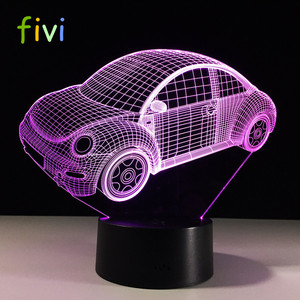
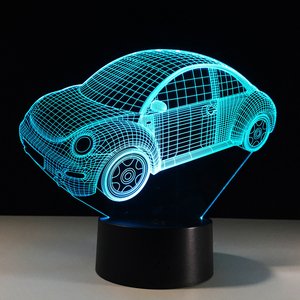
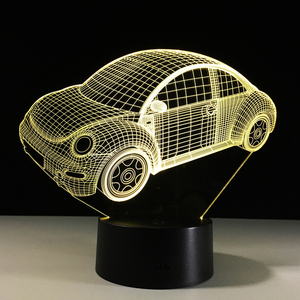



ใหม่ล่าสุด LED ไฟกลางคืนเด็กโคมไฟของเล่นเด็กเซ็นเซอร์สัมผัสรถยนต์3D โคมไฟ LED ไฟกลางคืนตกแต่งบ้านเตียงแสง
พร้อมส่ง
฿93.43 - ฿112.12
การสั่งซื้อขั้นต่ำ: 10 ชิ้น
การจัดส่งต่อชิ้น: ฿133.04


เซ็นเซอร์สัมผัสแม่เหล็ก Led ไฟหกเหลี่ยม,ไฟผนังรังผึ้งไฟ Led ไฟควอนตัมโคมไฟกลางคืนสำหรับบ้าน
฿130.80 - ฿205.54
การสั่งซื้อขั้นต่ำ: 10 ชุด
การจัดส่งต่อชิ้น: ฿343.82






RGB ไฟ LED 16สีติดใต้ตู้,ไฟ LED เซนเซอร์แบบสัมผัสหรี่แสงได้สำหรับตู้ตู้เสื้อผ้าบันไดโถงทางเดินโคมไฟกลางคืน
฿37.38 - ฿231.70
การสั่งซื้อขั้นต่ำ: 10 ชิ้น












ตู้เสื้อผ้ากลม LED แบบพกพา,เซ็นเซอร์สัมผัสดูดซับแม่เหล็กขนาดเล็กไฟกลางคืน LED
พร้อมส่ง
฿37.00 - ฿44.48
การสั่งซื้อขั้นต่ำ: 1 ชิ้น
การจัดส่งต่อชิ้น: ฿198.82






Hot 6ชิ้น/เซ็ต DIY Quantum Light Touch Sensitive Sensor Modular Hexagonal Wall โคมไฟ Novelty Creative ตกแต่ง Led Night Light
พร้อมส่ง
฿119.59 - ฿142.01
การสั่งซื้อขั้นต่ำ: 6 ชิ้น
การจัดส่งต่อชิ้น: ฿123.70






Hexagon Magnetic หกเหลี่ยมตกแต่งโคมไฟ Quantum โคมไฟกลางคืน Led Hex Light Sensor Modular Touch Light
พร้อมส่ง
฿93.43 - ฿115.85
การสั่งซื้อขั้นต่ำ: 1000 ชิ้น
การจัดส่งต่อชิ้น: ฿19.81






ปรับได้7สีตกแต่ง3D ภาพลวงตาฟุตบอลโคมไฟกลางคืน7สีเปลี่ยนเซ็นเซอร์สัมผัสสีขาวร้าวฐานแสงกลางคืน
พร้อมส่ง
฿136.41 - ฿177.52
การสั่งซื้อขั้นต่ำ: 10 ชิ้น
การจัดส่งต่อชิ้น: ฿203.68






ไฟใต้ตู้ Led ระบบสัมผัสอัจฉริยะ,ไฟมีเซ็นเซอร์ติดภายในบานพับสำหรับห้องนอนตู้เสื้อผ้าห้องครัวไฟกลางคืน
฿10.84 - ฿17.57
การสั่งซื้อขั้นต่ำ: 100 ชิ้น






กล่องสีกระต่ายสร้างสรรค์ไฟ LED หลากสีซิลิโคนสัมผัสเซ็นเซอร์ควบคุมแสงกลางคืนสำหรับเด็กสีเหลืองอบอุ่น + ห้องนอนที่มีสีสัน
พร้อมส่ง
฿186.49 - ฿261.23
การสั่งซื้อขั้นต่ำ: 1 ชิ้น
การจัดส่งต่อชิ้น: ฿444.72






ภาพลวงตา3d ไฟ Led ชื่อ I Love You โคมไฟเซ็นเซอร์แบบสัมผัสสำหรับไฟกลางคืนในห้องนอน
พร้อมส่ง
฿76.99 - ฿85.96
การสั่งซื้อขั้นต่ำ: 2 ชิ้น
การจัดส่งต่อชิ้น: ฿565.42
- 10%






ไฟกลางคืน Led เปลี่ยนสีได้สำหรับเด็ก,ไฟกลางคืนชาร์จไฟได้ควบคุมด้วยรีโมตเซ็นเซอร์ตามสั่ง
พร้อมส่ง
฿134.54 - ฿168.17
การสั่งซื้อขั้นต่ำ: 8 ชิ้น
การจัดส่งต่อชิ้น: ฿174.53






Night Light 16 สีเปลี่ยน TOUCH SENSOR 3D ไดโนเสาร์สำหรับเด็ก
฿205.54 - ฿280.29
การสั่งซื้อขั้นต่ำ: 1 ชิ้น






Rebow ไฟกลางคืน Led ทรงหกเหลี่ยมควอนตัมเซ็นเซอร์สัมผัส,เซ็นเซอร์แบบโมเดิร์นรังผึ้งในบ้านสำหรับเด็ก
พร้อมส่ง
฿106.14 - ฿115.85
การสั่งซื้อขั้นต่ำ: 6 ชิ้น
การจัดส่งต่อชิ้น: ฿174.53


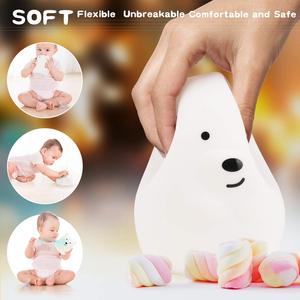



โคมไฟซิลิโคน Led พร้อมเซนเซอร์สัมผัส,โคมไฟหัวเตียงเด็กไฟกลางคืนของเล่นตลกขบขันไร้สายรูปหมีกระต่าย7สี
฿156.96 - ฿171.91
การสั่งซื้อขั้นต่ำ: 500 ชิ้น
การจัดส่งต่อชิ้น: ฿257.12






ไฟกลางคืน LED เซ็นเซอร์สัมผัสซิลิโคนชาร์จ USB,โคมไฟของเล่นของขวัญวันหยุดสำหรับเด็กเด็กน้อยรูปสัตว์กระต่ายน่ารัก
พร้อมส่ง
฿186.86 - ฿242.92
การสั่งซื้อขั้นต่ำ: 10 ชุด
การจัดส่งต่อชิ้น: ฿163.69






1128 โคมไฟตั้งโต๊ะ LED เซ็นเซอร์สัมผัสแบบชาร์จไฟได้ ไฟ LED ลดแสงไฟอ่านหนังสือ
฿71.01 - ฿80.35
การสั่งซื้อขั้นต่ำ: 48 ชิ้น
การจัดส่งต่อชิ้น: ฿54.57






โคมไฟตั้งโต๊ะตกแต่งวันคริสต์มาส,ไฟ LED เซ็นเซอร์แบบสัมผัสไฟต้นไม้ลวดทองแดงไฟกลางคืนตกแต่งบ้าน
พร้อมส่ง
฿205.54 - ฿392.40
การสั่งซื้อขั้นต่ำ: 2 ชิ้น
การจัดส่งต่อชิ้น: ฿596.44






ตู้เก็บของในบ้านชาร์จได้ USB,สองรุ่นสีขาวอบอุ่นไฟ LED ตู้เสื้อผ้าขนาดเล็กเซ็นเซอร์ตรวจจับการเคลื่อนไหวไฟ LED กลางคืนพร้อมสติกเกอร์3M
฿74.37 - ฿89.32
การสั่งซื้อขั้นต่ำ: 100 ชิ้น
การจัดส่งต่อชิ้น: ฿28.41






โคมไฟกระต่ายสำหรับเด็ก,โคมไฟข้างเตียงซิลิโคนหลากสีควบคุมด้วยการแตะไฟกลางคืน LED สไตล์ใหม่
พร้อมส่ง
฿100.53 - ฿186.49
การสั่งซื้อขั้นต่ำ: 1 ชิ้น
การจัดส่งต่อชิ้น: ฿948.10






โคมไฟกระต่ายกระต่ายไฟกลางคืน LED,ไฟกลางคืนสำหรับเด็กไฟข้างเตียงเด็กทารกโคมไฟ USB ซิลิโคนควบคุมด้วยการแตะไฟเซ็นเซอร์สัมผัส
฿224.23 - ฿392.40
การสั่งซื้อขั้นต่ำ: 100 ชิ้น






โคมไฟตั้งโต๊ะไร้สายแบบชาร์จไฟได้ไฟกลางคืนมีเซ็นเซอร์สัมผัสแบบชาร์จไฟได้สำหรับป้องกันดวงตาโคมไฟตั้งโต๊ะร้านอาหารโรงแรมบาร์และห้องนอน
฿485.83 - ฿560.57
การสั่งซื้อขั้นต่ำ: 10 ชุด






โคมไฟLEDรูปกระต่ายบันนี่สำหรับเด็ก,ไฟกลางคืนไฟห้องนอนเด็กโคมไฟข้างเตียงUSBซิลิโคนแตะควบคุมไฟเซ็นเซอร์สัมผัส
พร้อมส่ง
฿130.80 - ฿205.54
การสั่งซื้อขั้นต่ำ: 2 ชิ้น
การจัดส่งต่อชิ้น: ฿402.49






Goldmore4นำการออกแบบใหม่ร้อนขายไร้สายเซ็นเซอร์สัมผัสแสงกลางคืน
฿21.68 - ฿26.16
การสั่งซื้อขั้นต่ำ: 3000 ชิ้น






Light TOUCH Sensitive SENSOR Modular Hexagonal Wall โคมไฟ Novelty Creative ตกแต่ง LED Night Light
พร้อมส่ง
฿130.80 - ฿186.86
การสั่งซื้อขั้นต่ำ: 6 ชิ้น
การจัดส่งต่อชิ้น: ฿103.90






เซนเซอร์ระบบสัมผัสรูปแมวน่ารัก,ใช้พลังงานจากแบตเตอรี่ไฟกลางคืนสำหรับเด็กเด็กทารกห้องนอน
พร้อมส่ง
฿123.33 - ฿142.01
การสั่งซื้อขั้นต่ำ: 100 ชิ้น
การจัดส่งต่อชิ้น: ฿17.94






Custom พิมพ์ Luna ลอยโต๊ะบอลตารางแบบพกพา USB ชาร์จ Star Touch Sensor ควบคุม Baby LED Night Light 3D โคมไฟดวงจันทร์
พร้อมส่ง
฿220.49 - ฿269.07
การสั่งซื้อขั้นต่ำ: 1 ชิ้น
การจัดส่งต่อชิ้น: ฿755.27
หมวดหมู่ยอดนิยม
เกี่ยวกับ ไฟเซ็นเซอร์สัมผัส
ไฟเซ็นเซอร์สัมผัส ไม่ใช่เรื่องใหม่สำหรับคนทั่วไปในปัจจุบันและไม่ถือว่าเป็นสิ่งต้องห้ามอีกต่อไป หากคุณกำลังมองหาความสุขสุดท้ายนี้คุณต้องตรวจสอบความยิ่งใหญ่ คอลเลกชัน ไฟเซ็นเซอร์สัมผัส ที่ Alibaba.com เหล่านี้ยั่วยวนและโค้ง ไฟเซ็นเซอร์สัมผัส คุ้มค่ากับเงินทุกบาทและมั่นใจว่าจะทำให้ค่ำคืนนี้พิเศษสำหรับคุณ ตุ๊กตาเหล่านี้มีลักษณะเหมือนจริงตั้งแต่ขนไปจนถึงปลายเท้าในทุกแง่มุม
ไม่ว่าคุณจะเป็นคนขี้เหงาที่กำลังมองหาคู่ชีวิตที่เหมือนมีชีวิตหรือคู่รักที่ต้องการเติมชีวิตชีวาให้กับชีวิตคุณสามารถใช้สิ่งเหล่านี้ได้ . ไฟเซ็นเซอร์สัมผัส สำหรับจุดไฟนั้น ที่งดงามเหล่านี้ ไฟเซ็นเซอร์สัมผัส สามารถปรับแต่งได้ตามความคาดหวังของคุณ น่าทึ่งเหล่านี้ ไฟเซ็นเซอร์สัมผัส มีให้เลือกทั้งชายและหญิงและทำจากซิลิโคนเกรดยาเพื่อความปลอดภัยในการใช้งาน รับตอนนี้และเพลิดเพลินไปกับค่ำคืนแห่งความหลงใหลและไฟ
Alibaba.com ขอเสนอสิ่งที่น่าทึ่งเหล่านี้ ไฟเซ็นเซอร์สัมผัส ในทุกรูปร่างขนาดและชาติพันธุ์ ไม่ว่าความต้องการของคุณสำหรับไฟล์. ไฟเซ็นเซอร์สัมผัส คุณสามารถหาได้ทั้งหมดบนไซต์ เหล่านี้ ไฟเซ็นเซอร์สัมผัส ได้รับการขึ้นรูปโดยช่างฝีมือที่ดีที่สุดและทุกรายละเอียดที่ซับซ้อนจะได้รับการตรวจสอบอย่างละเอียด ตุ๊กตาเหล่านี้มีดวงตาผมเล็บและส่วนอื่น ๆ ของร่างกายคล้ายกับคนในชีวิตจริง
Alibaba.com ให้บริการที่หลากหลาย ไฟเซ็นเซอร์สัมผัส ที่สามารถช่วยคุณซื้อผลิตภัณฑ์ที่เหมาะสมกับงบประมาณของคุณและข้อกำหนดอื่น ๆ ผลิตภัณฑ์เหล่านี้ปลอดภัยต่อการใช้งานได้รับการรับรองและเป็นมิตรกับสิ่งแวดล้อม มีคำสั่งซื้อ OEM สำหรับผลิตภัณฑ์เหล่านี้
ไม่ว่าคุณจะเป็นคนขี้เหงาที่กำลังมองหาคู่ชีวิตที่เหมือนมีชีวิตหรือคู่รักที่ต้องการเติมชีวิตชีวาให้กับชีวิตคุณสามารถใช้สิ่งเหล่านี้ได้ . ไฟเซ็นเซอร์สัมผัส สำหรับจุดไฟนั้น ที่งดงามเหล่านี้ ไฟเซ็นเซอร์สัมผัส สามารถปรับแต่งได้ตามความคาดหวังของคุณ น่าทึ่งเหล่านี้ ไฟเซ็นเซอร์สัมผัส มีให้เลือกทั้งชายและหญิงและทำจากซิลิโคนเกรดยาเพื่อความปลอดภัยในการใช้งาน รับตอนนี้และเพลิดเพลินไปกับค่ำคืนแห่งความหลงใหลและไฟ
Alibaba.com ขอเสนอสิ่งที่น่าทึ่งเหล่านี้ ไฟเซ็นเซอร์สัมผัส ในทุกรูปร่างขนาดและชาติพันธุ์ ไม่ว่าความต้องการของคุณสำหรับไฟล์. ไฟเซ็นเซอร์สัมผัส คุณสามารถหาได้ทั้งหมดบนไซต์ เหล่านี้ ไฟเซ็นเซอร์สัมผัส ได้รับการขึ้นรูปโดยช่างฝีมือที่ดีที่สุดและทุกรายละเอียดที่ซับซ้อนจะได้รับการตรวจสอบอย่างละเอียด ตุ๊กตาเหล่านี้มีดวงตาผมเล็บและส่วนอื่น ๆ ของร่างกายคล้ายกับคนในชีวิตจริง
Alibaba.com ให้บริการที่หลากหลาย ไฟเซ็นเซอร์สัมผัส ที่สามารถช่วยคุณซื้อผลิตภัณฑ์ที่เหมาะสมกับงบประมาณของคุณและข้อกำหนดอื่น ๆ ผลิตภัณฑ์เหล่านี้ปลอดภัยต่อการใช้งานได้รับการรับรองและเป็นมิตรกับสิ่งแวดล้อม มีคำสั่งซื้อ OEM สำหรับผลิตภัณฑ์เหล่านี้

